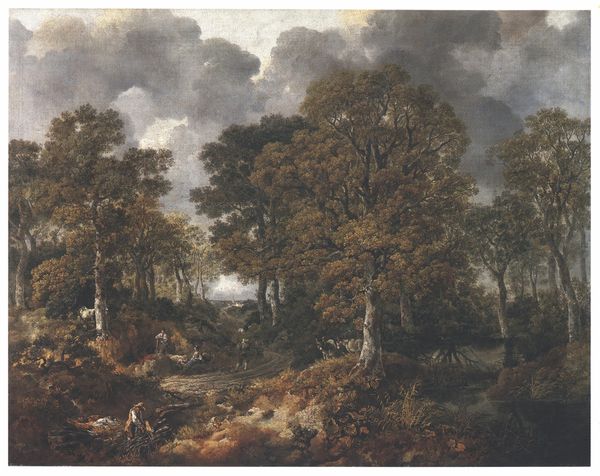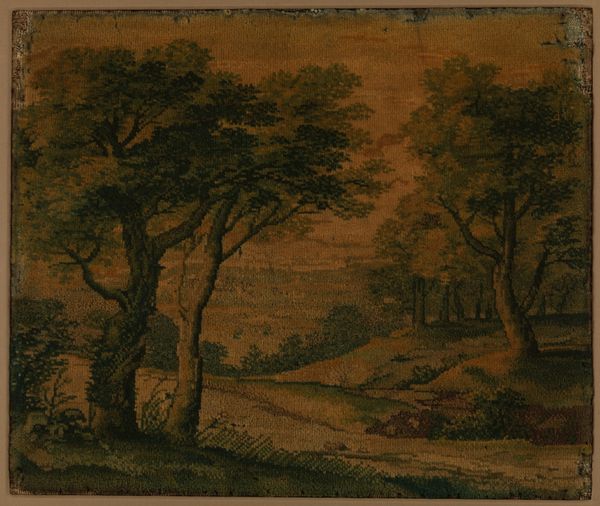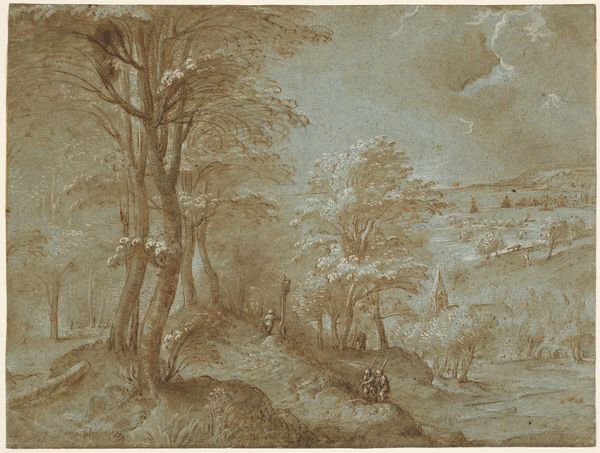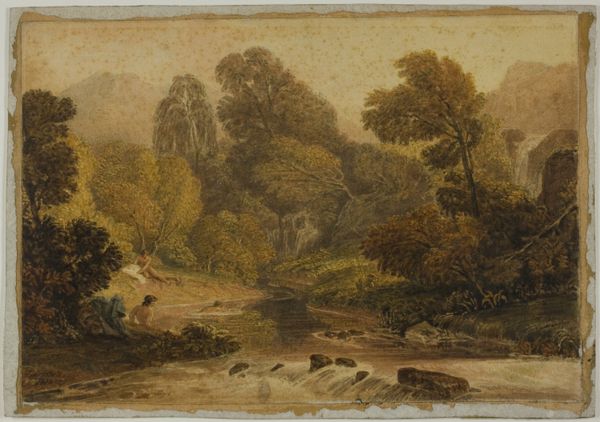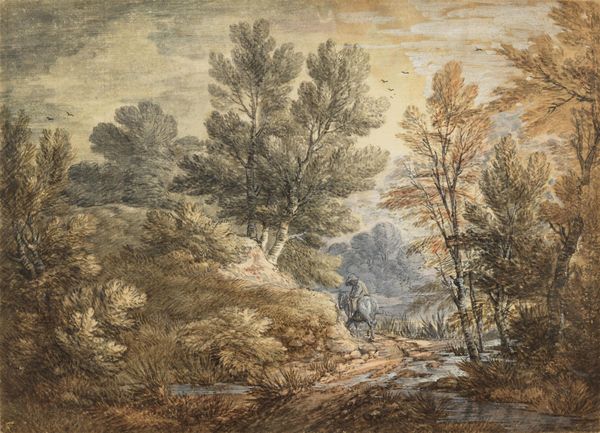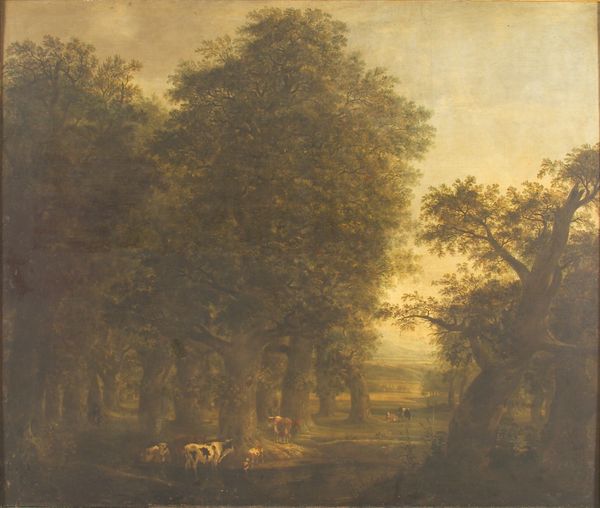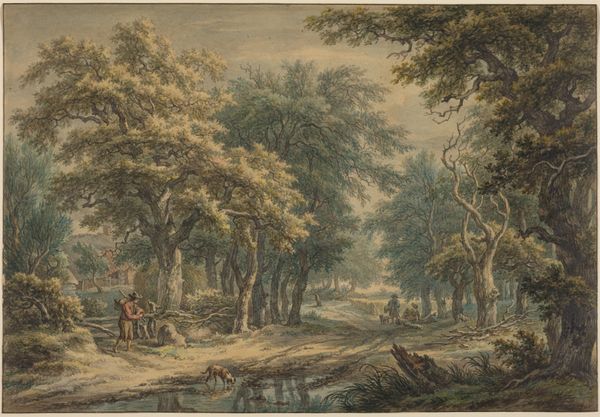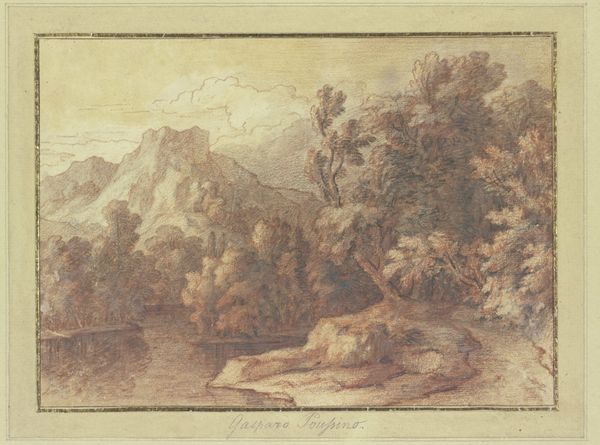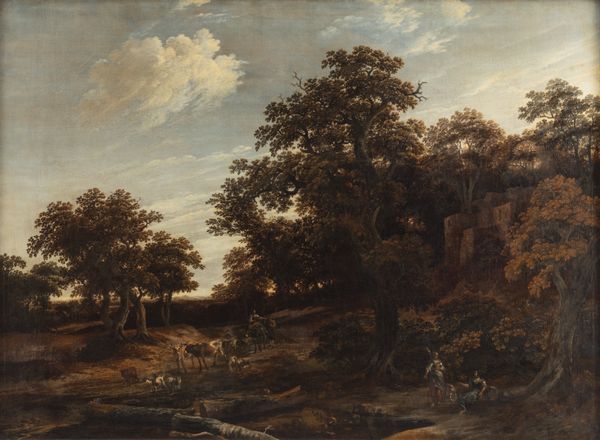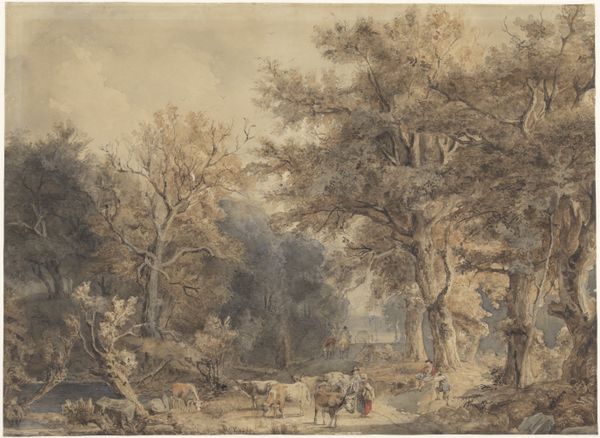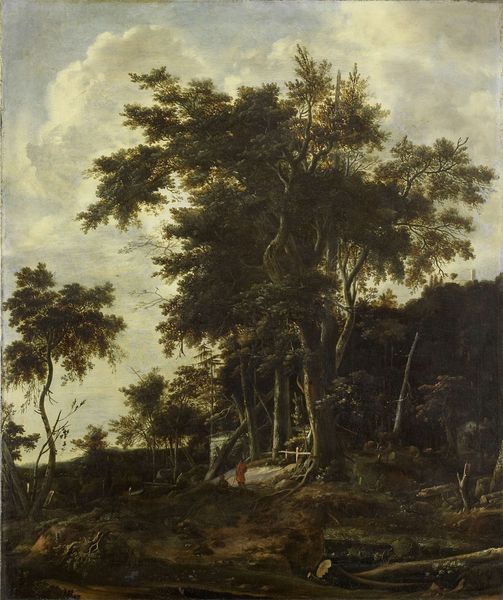
Wooded Landscape with Herdsman and Cattle c. early 1770s
0:00
0:00
Dimensions: 8 3/8 × 11 7/8 in. (21.27 × 30.16 cm) (image)16 1/2 x 20 3/8 x 1 7/16 in. (41.91 x 51.75 x 3.65 cm) (outer frame)
Copyright: Public Domain
Thomas Gainsborough created this landscape drawing with watercolor and graphite, capturing a scene of pastoral life. Trees, laden with foliage, frame a herdsman and cattle along a path. Note how the trees bend, almost reaching, perhaps hinting at the forces of nature. These trees carry echoes of the "arbor vitae" or tree of life, a symbol of immortality and connection between heaven and earth. This motif is hardly new; consider its prominence in ancient mythologies, where sacred groves held spiritual significance. Even in modern times, the tree persists as a symbol of growth, family, and interconnectedness, tapping into a primal, subconscious understanding of our place in the natural world. It is a symbol that persists across cultures and epochs, revealing our enduring emotional connection to the earth.
Comments
minneapolisinstituteofart almost 2 years ago
⋮
Though best known for his magnificent portraits, Thomas Gainsborough preferred painting “landskips” (as he called them) and played a key role in establishing the importance of landscape in British art. As a young artist he enjoyed the beauties of his native Suffolk countryside. After moving to Bath, to pursue the regular income the spa town could provide a portrait painter, he had less time for gamboling through the fields. Instead, he fashioned miniature landscapes, using broccoli for trees, bits of cork or coal for stones, fragments of mirrors for water, and whatever else was to hand. He dedicated an oak folding table to this purpose and would set it up in his parlor. This is not to say he never again drew from nature, but many of his mature landscapes are fantasies deeply informed by experience.
Join the conversation
Join millions of artists and users on Artera today and experience the ultimate creative platform.

